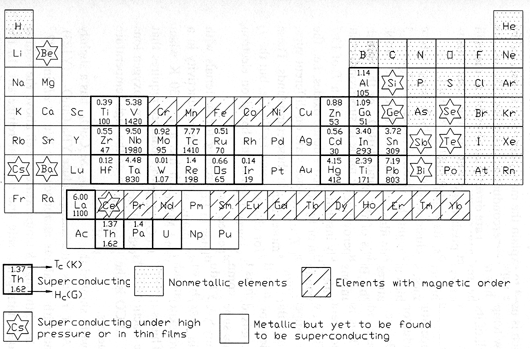Superconductors show promise
The first materials discovered to be superconducting, like mercury, are elementary metals. These all had critical temperatures (the temperature at which they became superconducting) less than 10 K. These were to later become known as Type I superconductors. Later, metallic alloys were found to be superconducting, and then, most suprising- ceramic compounds- many with much higher critical temperatures. The latter became known as Type II superconductors. The current record Tc is 135K- and some scientists assert that there is no upper limit for Type II superconductors!
(Bourdillon p.3)
Type II superconductors have a very wide range of chemical compositions, which won't be discussed in detail here. What is important is that most of them have a planar layering within the crystal structure. As mentioned, BCS Theory falls short of explaining Type II superconductivity, but modified theories suggest that it relates to this planar layering and spin interactions between Cooper pairs and ions in the crystal lattice.
Mixed Phase
One of the most peculiar properties of Type II
superconductors is the mixed phase. In normal Type I materials, magnetic fields can either be expelled completely when it is in its superconducting phase, or it can be penetrated by a magnetic field when it is in is normal phase. In Type II superconductors, at a limited range of temperature and applied magnetic field, it allows a mixture of these two properties to occur. In limited areas, microscopic magnetic, normal regions occur- called fluxoids. These fluxoids arrange themselves in a peculiar hexagonal lattice. These normal fluxoids are surrounded by material still in the superconductive state, allowing both a magnetic field (albeit small) to partially penetrate, and current to flow without resistance. As Tc or Bc is approached, the fluxoids increase in size and eventually overlap and overtake the superconductive regions, bringing the material completely into a normal state.
Main / Introduction / BCS Theory / Type II / Practicality / Exotic / Ferromagnetic / Applications / Sources
™, ©, ®, K&D:
TJ Barry MMIII
